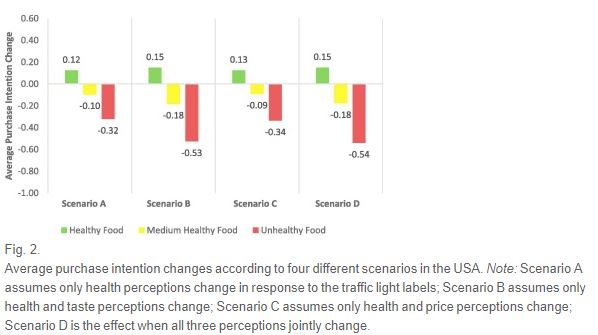Last week, the USDA finally released its proposed rule outlining the ways in which it may implement the National Bioengineered Food Disclosure Standard (NBFDS) (i.e., the a mandatory labeling law for GMOs) that was passed by the US Congress and signed into law back in the summer of 2016. At the point, this is still a proposed rule: public comments are still being accepted until July 3, 2018.
As I wrote at the time of its passage, the mandatory labeling bill was not particularly popular with the "anti" or "pro" GMO crowds. I won't rehash all the issues involved or re-cover all the arguments for and against mandatory labeling (as an aside, I am amazed at how often I still see people citing my result on consumer preferences for DNA labels; I suppose that's a least one mark of success when people unknowingly cite your own research results to you as something you need to know!). Here, I want to point out a few things that were news (at least to me) in the proposed rule.
- One of the controversial facets of the original bill was that it allowed for disclosure of genetically engineered ingredients via a QR code (this is an issue we have researched - e.g., see here). In addition to the QR code or a text disclosure, it appears companies might be able to also use one of several different types of labels (I am not aware of any publicly available research on consumer perception of these labels). Here are some of the examples proposed:
- It also appears that a food may only have to be labeled if it actually contains genetically engineered (or shall i now say "bioengineered") ingredients that contain recombinant DNA. Why does this matter?
- Sugar and oil don't contain DNA. Tests for recominant DNA are likely to come back negative even if applied to oil from derived from bioengineered corn or soy or if applied to sugar from bioengineered sugar beets. As such, foods using oil or sugar derived from GE crops may not ultimately be subject to the mandatory disclosure.
- Other biotechnologies, such as gene editing, don't utilize recombinant DNA, and as such may not ultimately fall under this mandatory labeling law.
- What will be the tolerances or thresholds that would trigger mandatory labeling? The proposed rule didn't say for sure but offered several options:
- A) disclosure is required if more than 5% of any ingredient (by weight) is bioengineered;
- B) disclosure is required if more than 0.9% of any ingredient (by weight) is bioengineered;
- C) disclosure is required if more than 5% of the entire product (by weight) is bioengineered.
- It should be noted that these different thresholds are likely to imply VERY different costs of compliance; a 0.9% threshold is likely to be more than 5x more costly than a 5% threshold, and individual ingredient thresholds will be much more costly than total product thresholds.
- There are many exceptions, for examples for small manufacturer, for certain enzymes, and for animal products derived from animals fed bioengineered feed.


